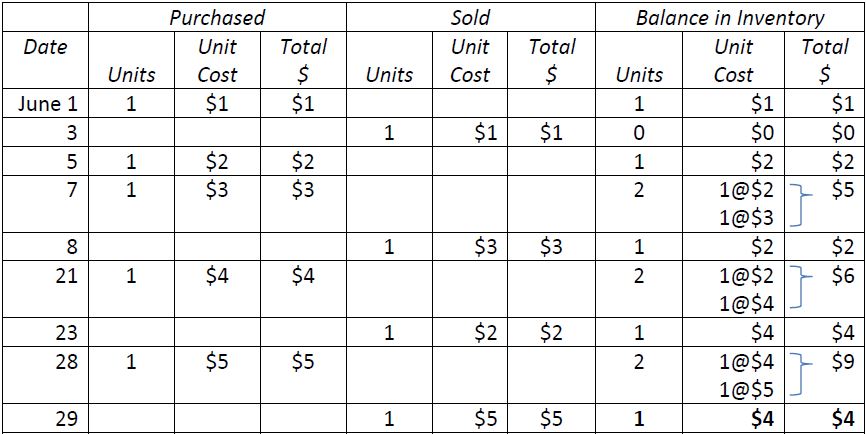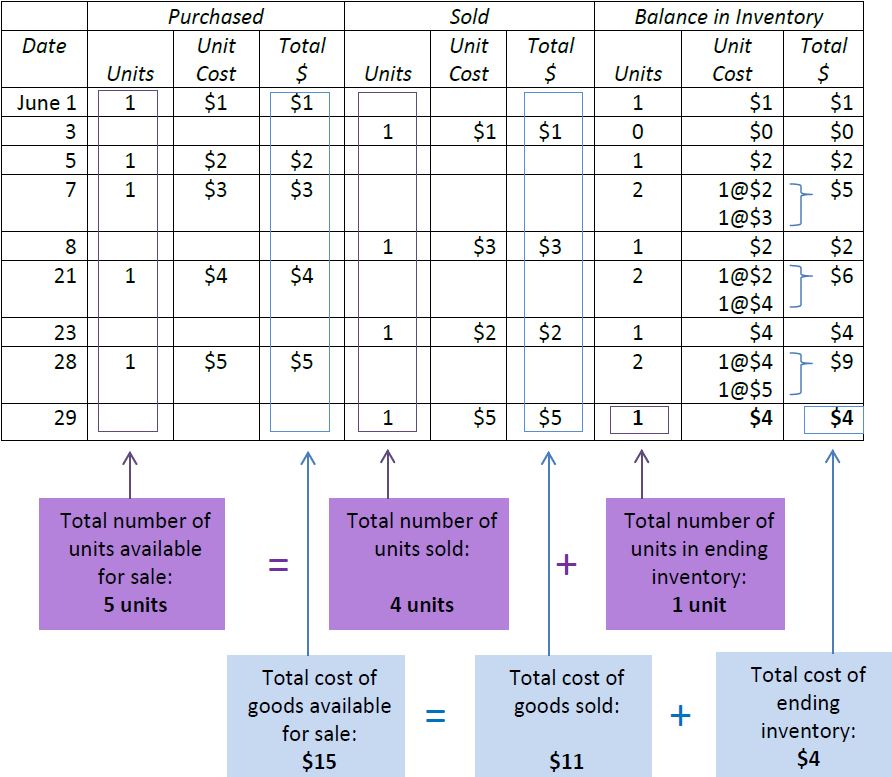To apply specific identification, we need information about which units were sold on each date. Assume that specific units were sold as detailed below.
|
Date of Sale |
Specific Unit Sold |
|||
|
June |
3 |
The unit purchased on June 1 was sold on June 3 |
||
|
8 |
The unit purchased on June 7 was sold on June 8 |
|||
|
23 |
The unit purchased on June 5 was sold on June 23 |
|||
|
29 |
The unit purchased on June 28 was sold on June 29 |
|||
Using the information above to apply specific identification, the resulting inventory record card appears in Figure 6.6.

Notice in Figure 6.7 below that the number of units sold plus the units in ending inventory equals the total units that were available for sale (4 + 1 = 5 units). As well, the cost of goods sold plus the cost of items in ending inventory equals the cost of goods available for sale ($11 + $4 = $15). This relationship will always be true for each of specific identification, FIFO, and weighted average.

- 2122 reads






